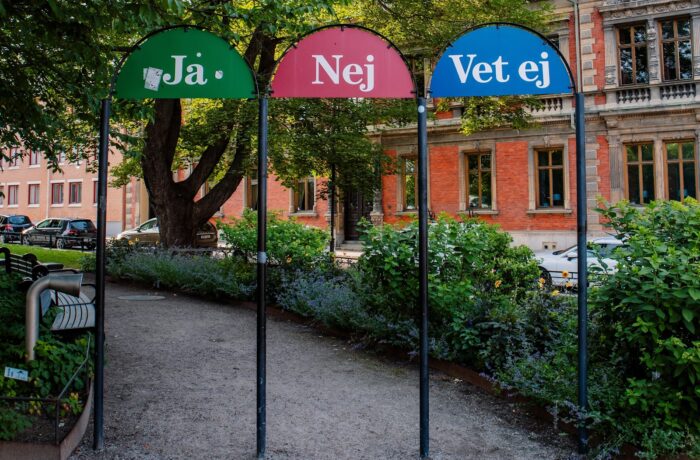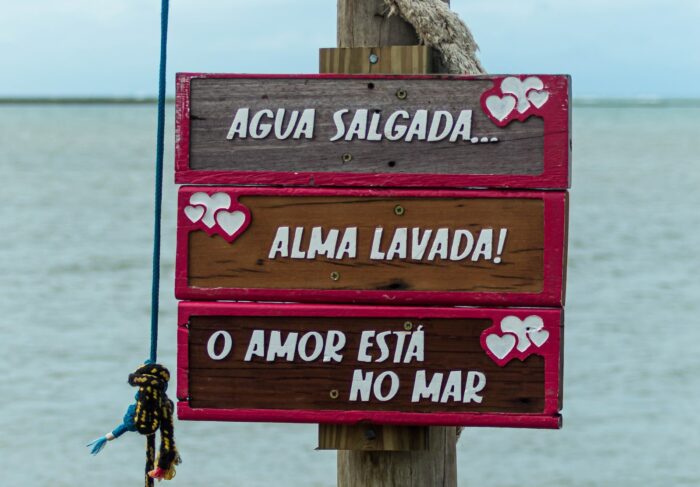Top 10 Easiest Languages to Learn in 2024
Read other articles:
Back to posts
Table of Contents
If you’re looking for a language that you can master as close as possible to native speaker level in the shortest amount of time, it helps if it’s not one of the toughest languages on the planet!
Fortunately, some very “learnable” languages make the process of language acquisition slightly easier for English speakers — and won’t require three-hour classes every day for the next decade.
In fact, you may be able to learn the language without a teacher.
Even better news: some of the easiest languages to study are also the most popular ones for English speakers to know (they’re widely spoken European languages). There’s a good chance that you’ve toyed with the idea of learning one of them — and the ease of the learning experience might be the motivation you need to start.
We’ve narrowed down the easiest foreign languages to learn and here are the leading 10 (in no particular order …
Spanish

Spanish is one of the easiest languages to learn for English speakers, which is just as well given its popularity. Most of South and Central America speaks it in addition to much of the Iberian Peninsula though the language versions have many regional differences.
Although Spanish is a Romance language (evolved from late Latin) rather than a Germanic language, English borrows many words from Latin so the vocab is not too challenging.
What’s so easy about it? Spanish uses the same alphabet as English, shares many sounds and is phonetic. Once you learn the sounds, they are consistent throughout and are spelled just as they are pronounced with very few exceptions. Spanish also has similar sentence structures to English.
Anything difficult? Every noun has a gender (male/female) that you need to learn. Also, the ñ sound (like the n in onion) may take some getting used to.
Popularity: VERY HIGH. There are around 500 million native speakers of Spanish — and many millions of non-native speakers.
Italian
Lovers of Italian food, culture and more will be glad to learn that Italian is generally considered one of the easiest foreign languages to learn.
Descended from late Latin, Italian is not as widely spoken as Spanish or Portuguese (because of their South American usage). The language is, however, spoken outside of Italy in countries like Switzerland, Croatia and Argentina.
What’s so easy about it? Pronunciation is straightforward and once you get to grips with the extra vowel sounds, should be easy enough to master (once you also learn the unique “music” of the language). Vocabulary is manageable because many Latin words are used in English and sentence structure is similar to English.
Anything difficult? Some grammar issues may cause difficulties, such as the many verb conjugations, tenses and irregularities that must be learned.
Popularity: MODERATE. Approximately 63 million people speak Italian as their first language.
Dutch
It may not sound like it when you listen to two people from the Netherlands in conversation but Dutch is the language most closely related to English.
Like English, Dutch is a Germanic language and the two languages share a lot of vocabulary, making it relatively easy to learn. The downside is that it’s not spoken in too many places outside of the Netherlands, other than a few less-travelled areas of the world.
What’s so easy about it? Many words used are identical to English so the vocabulary is no great challenge.
Anything difficult? Pronunciation is quite different from English. You’ll need to learn the pronunciation rules and foreign consonant sounds, such as ch, sch, ng and nk.
Popularity: MODERATE. Around 22 million people speak Dutch as a native language and, outside of the Netherlands, only in the likes of Suriname, Aruba and the Dutch Antilles.
Norwegian
Norwegian (“Norsk”) is another Germanic language with strong connections to Old Norse.
Few English people outside of those living and working in Norway are motivated to learn Norwegian because English is widely spoken but mastering it can help unlock doors to the country’s rich literary culture and mythology (The Vikings).
What’s so easy about it? The language has a simple grammatical structure, with sentences largely formed in the same way as English. Also, some shared vocabulary makes learning easier.
Anything difficult? Pronunciation is less difficult than in most other Scandinavian languages but may still challenge native English speakers. Popularity: VERY LOW. Only around five million people speak Norwegian natively, primarily in the language’s homeland.
Swedish

Swedish is the most widely spoken of the Scandinavian languages and is also relatively easy for English speakers to learn, being another Germanic language.
However, because English is widely spoken by Swedish people, the motivation to learn their native language is often dampened.
What’s so easy about it? There are similar grammar rules, sentence structure rules and even some shared vocabulary in the language.
Anything difficult? Pronunciation can be tricky for native English speakers. There are also unfamiliar compound words and three extra vowels to learn. Popularity: LOW. Around 11 million people speak Swedish as their first language, mainly in Sweden and Finland (where it is also one of the national languages).
Danish

Danish is another language that is relatively easy to learn but with a low motivation to do so because Danes generally speak English well and the language is not spoken much outside of the native land.
However, for native English speakers living and working in Denmark, the resemblance of many words to aspects of old English should help with mastering the language.
What’s so easy about it? Straightforward grammar rules and many words that are similar to English make the vocabulary generally quite simple to learn.
Anything difficult? Pronunciation can be tough for English speakers to master.
Popularity: VERY LOW. There are only around 5.5 million native speakers of Danish in the world — the large majority of which are in Denmark. Danish is a protected minority language in Germany too.
Portuguese

The great popularity of Portuguese stems from the fact that it’s spoken in Brazil (an old Portuguese colony) as well as in its native Portugal and several African countries, such as Angola and Mozambique.
The Portuguese spoken in Brazil is different from that spoken in its native land, with the vocab varying as well as pronunciation. The version you learn will depend on where your focus is.
What’s so easy about it? It uses the same alphabet as the English language and the grammar rules are generally consistent.
Anything difficult? Unlike Spanish, Portuguese is not a pure phonetic language so some words are not spelled how they’re pronounced. You must learn the pronunciations, with several sounds proving quite challenging for native English speakers.
Popularity: VERY HIGH. Around 250-260 million speak Portuguese as their first language.
German

Some foreign language learners may be surprised to see German listed as one of the easiest languages to learn.
Most learners do consider German to be more challenging than Dutch or the Scandinavian-based Germanic languages but we include it here due to its popularity as one of the primary European languages.
What’s so easy about it? English and German share a common alphabet, comparable sentence structure and some familiar vocabulary.
Anything difficult? Some elements of grammar, pronunciation (of longer compound words, especially) and the numerous verb forms can be challenging for language learners to master.
Popularity: HIGH. Over 100 million people speak German as their first language in Austria, Switzerland and Luxembourg as well as in Germany.
Romanian

It surprises some language learners that Romanian, a language spoken mainly in Eastern Europe (where Slavic languages dominate) shares some similarities with Spanish, Italian and French.
That’s because they’re all Romance languages, descended from late Latin and, consequently, certain vocabulary is shared between them.
What’s so easy about it? English shares some of the same Latin words. Romanian is also a phonetic language, with words spelled the same way as they are pronounced.
Anything difficult? Some grammatical elements can prove challenging. For instance, the form of nouns can change depending on their relationship to the verb. Also, the letters with “diacritics” (accents and signs) are unfamiliar to English Speakers.
Popularity: MODERATE. Around 25 million people call Romanian their first language, mainly in Romania and Moldova.
Indonesian

Finally, a non-European language to round off our list of the easiest languages to learn.
Bahasa Indonesia is the national language of the massive island chain of Indonesia and shares many features with the Malaysian language, from which it derives.
What’s so easy about it? The grammar is very basic with no grammatical categories for gender, number or tense.
Anything difficult? There may be multiple ways to pronounce the same words depending on where you are in Indonesia. Popularity: HIGH. Despite the population of Indonesia exceeding 270 million, only around 40 million treat the language as their first language because of the many (700 plus) local languages spoken throughout the island chain. Bahasa Indonesia is, however, spoken fluently by an estimated 270 million people, making it one of the world’s most widely spoken languages.
How to make learning these languages even easier…
If you’re new to language learning, it makes sense to start with a language that’s manageable for other English speakers. The 10 languages outlined above still provide challenges for foreign language learners but there are fewer obstacles to achieving a high level.
Using the many wonderful language learning tools available now, you can master a language quicker than previously. The best apps provide access to native speakers — which is the best way to learn.
Video is one of the best ways to master a foreign language. YouTube and Netflix videos are excellent resources for this.
Our free Chrome extension combines Chat GPT with the latest in language acquisition techniques to help you learn from native speakers on YouTube and Netflix in almost any language as you build a comprehensive library of new phrases.
Read other articles:
Back to posts
